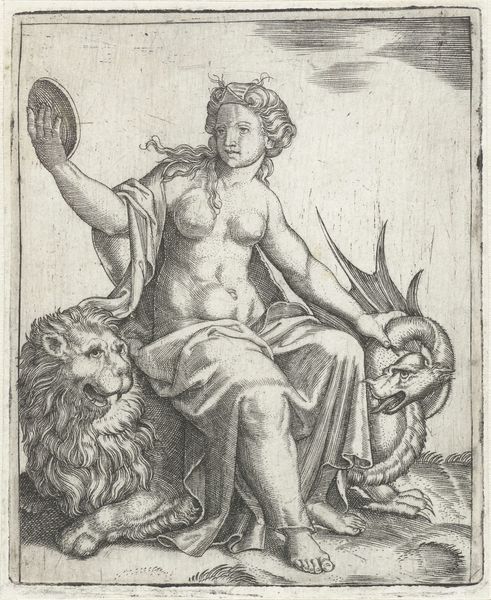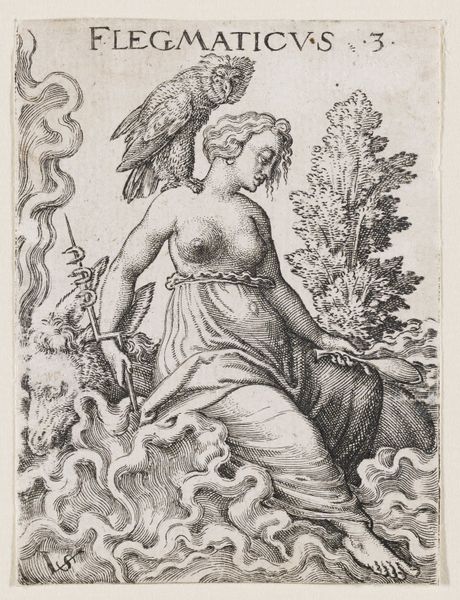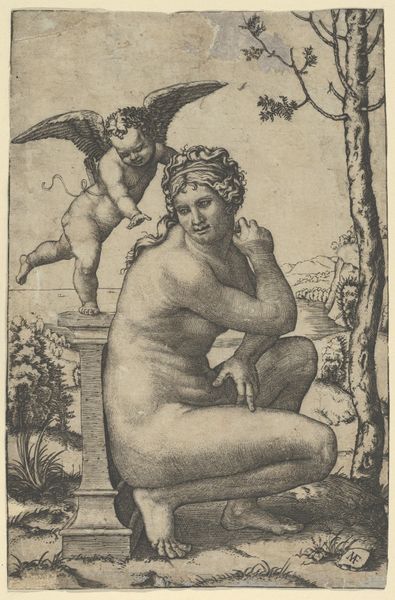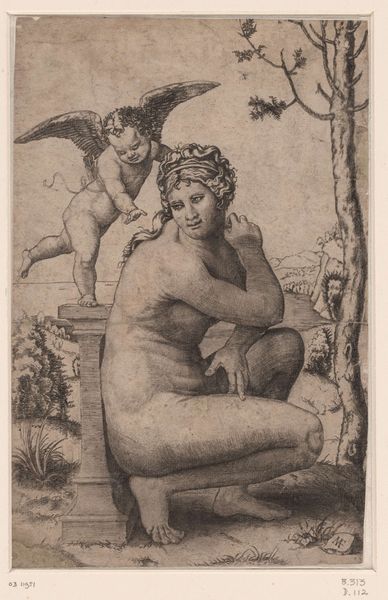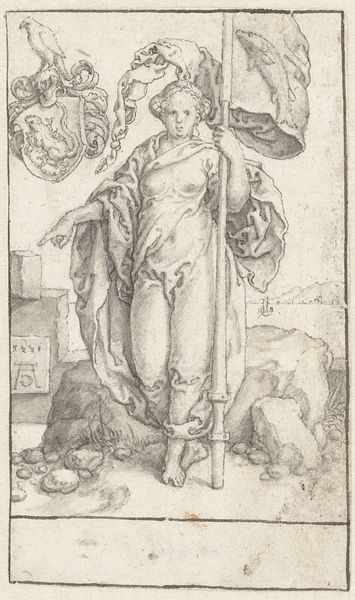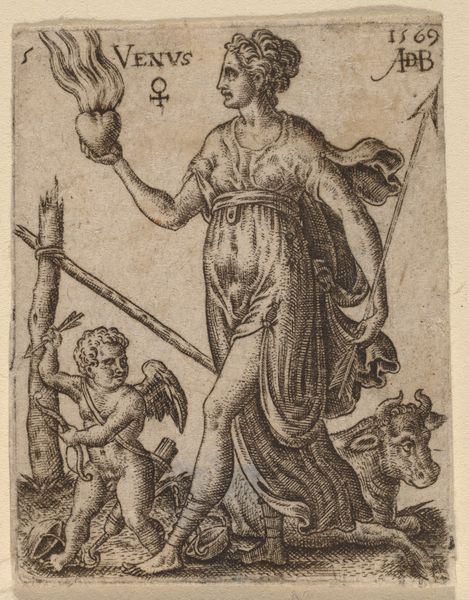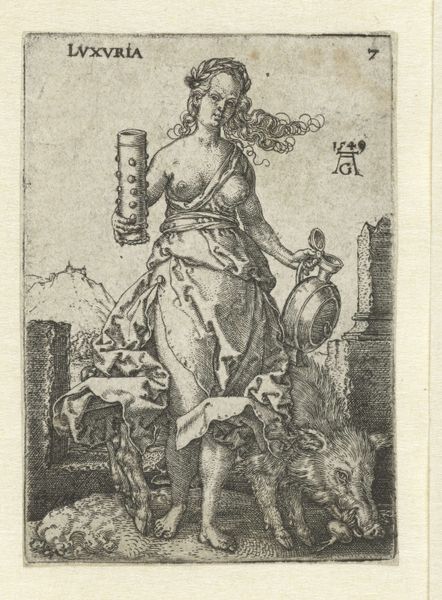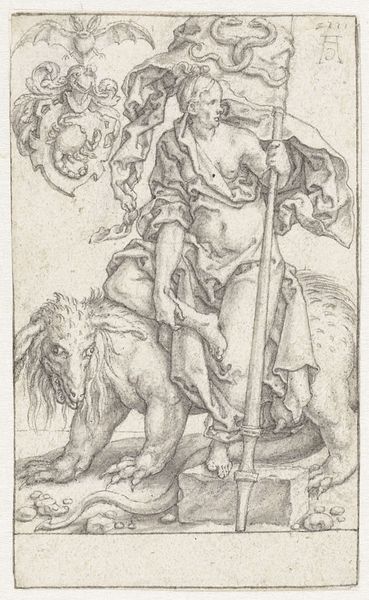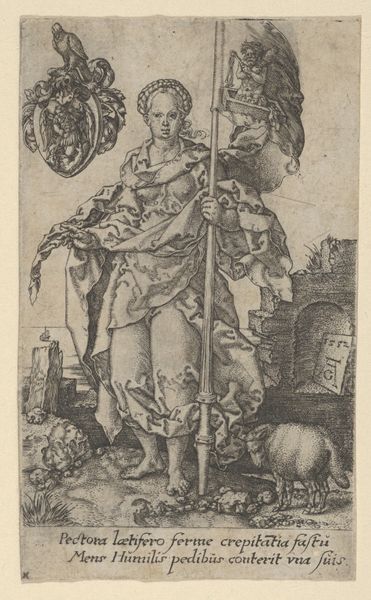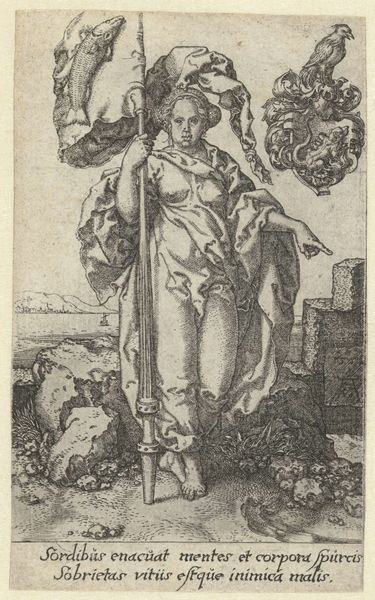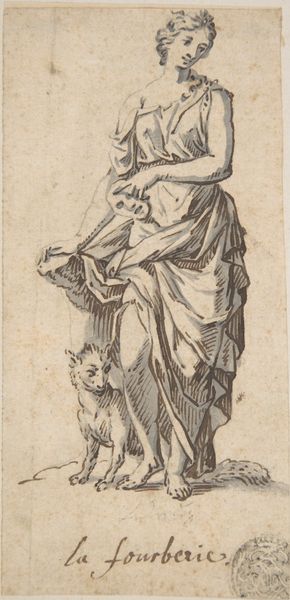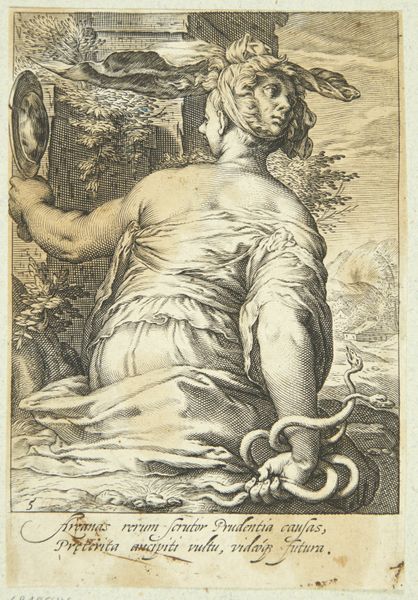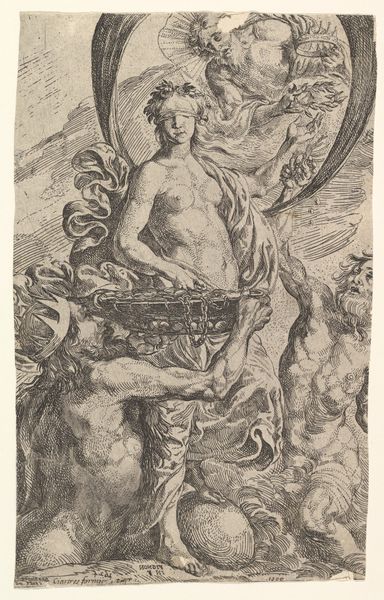
Prudence as a young woman, sitting on a lion and holding the neck of a dragon with her left hand, holding a mirror in her right hand 1505 - 1515
0:00
0:00
drawing, print, engraving
#
drawing
#
allegory
# print
#
figuration
#
11_renaissance
#
italian-renaissance
#
nude
#
engraving
Dimensions: Sheet: 4 3/16 × 3 1/8 in. (10.7 × 8 cm)
Copyright: Public Domain
Editor: This engraving, "Prudence as a young woman" by Marcantonio Raimondi, made in the early 16th century, really strikes me. It’s got this powerful, almost unsettling, symbolism with the woman, lion, and dragon. What do you see when you look at it? Curator: It's a fascinating example of how Renaissance artists visualized abstract concepts through allegory, fitting into a broader humanist trend of reviving classical virtues. The woman embodies Prudence, and the choice of animals, especially within the context of the burgeoning print market, reflects socio-political ideas circulating at the time. Who do you think might have been buying and consuming such images? Editor: I suppose wealthy educated people who wanted to demonstrate their knowledge and virtue. But how would they have interpreted it? Curator: They would likely see Prudence’s dominion over the lion and dragon as symbolic of reason controlling primal instincts and vice. Prints like these served as visual reminders of ideal governance – both self-governance and the governance of the state. The mirror would further symbolize self-reflection and careful consideration, essential qualities for those in power. These images weren’t just decorative; they had a didactic function. Editor: So, it’s like a political statement disguised as art? Curator: In a way, yes. The politics of imagery were crucial during the Renaissance. These engravings helped shape cultural values and reinforced a certain power dynamic. By disseminating classical virtues, artists contributed to the construction of a specific kind of civic identity. Editor: That's so much more than I initially thought! I had no idea it was such a loaded image politically. Curator: Exactly! Understanding the historical and cultural context helps us unpack the layers of meaning embedded in the artwork. It reveals how art participates in shaping society itself. Editor: Thanks, that gives me a completely new way to look at Renaissance art. Curator: My pleasure. These discussions help me look with fresh eyes as well!
Comments
No comments
Be the first to comment and join the conversation on the ultimate creative platform.
